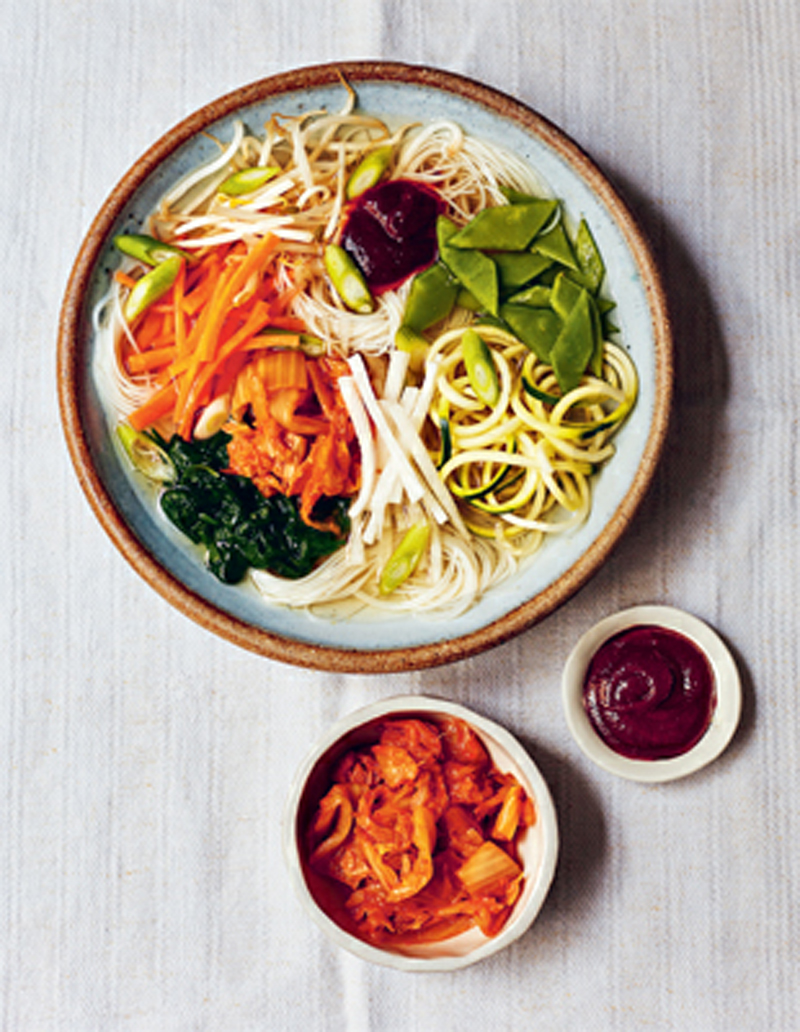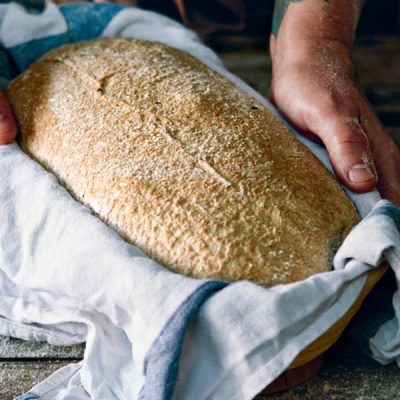Ingredients
-
⅓ oz (10 g) dried Kombu
-
½ oz (15 g) dried Shiitake Mushrooms
-
7 oz (200 g) rice Vermicelli Noodles
-
4 Tbsp Kimchi
-
4 tsp Gochujang
-
Sea Salt
-
A selection of the below
-
Daikon
-
Carrots
-
Zucchini
-
Cabbage
-
Spinach
-
Bean Sprouts
-
Green Onion
-
Snow Peas
Directions
Korean cuisine has in its arsenal two amazing ingredients that will perk up a bowl of healthy, pure, crisp veggie soup without question gochujang (a smoky red chilli paste) and the classic kimchi (fermented spicy vegetables). Armed with these, any veg that may have been hanging around in the fridge a bit long can be given a new lease of life. Follow the veggie suggestions below, or just add whatever you have to hand that appeals. A couple of tips here: a mandoline will speed up the process hugely; and buying your kombu from an Oriental supermarket will cost you far less than buying it from a health food store.
Steps
|
1
Done
|
If the kombu is in large sheets, cut it into thick strips. Put it in a saucepan with the dried shiitake and cover with 1.2 litres [5 cups] cold water. Leave to soak for an hour. |
|
2
Done
|
Put the rice noodles in a large bowl and cover with warm water. Leave to soak for about 20 minutes, or until well softened. |
|
3
Done
|
Once the kombu and mushrooms have soaked, put the pan over low–medium heat and bring it up to a simmer slowly. Before it gets to boiling point, remove the pan from the heat and strain the dashi, discarding the kombu and mushrooms. Taste and season the stock with salt. |
|
4
Done
|
Divide the softened noodles between 4 bowls. Arrange piles of your chosen vegetables around the bowls, adding a spoonful each of kimchi and gochujang to each bowl, too. |
|
5
Done
|
Gently ladle the dashi evenly between the bowls, being careful not to ruin your arrangement, and serve with extra kimchi and gochujang on the side, and with chopsticks and a spoon for eating. |









